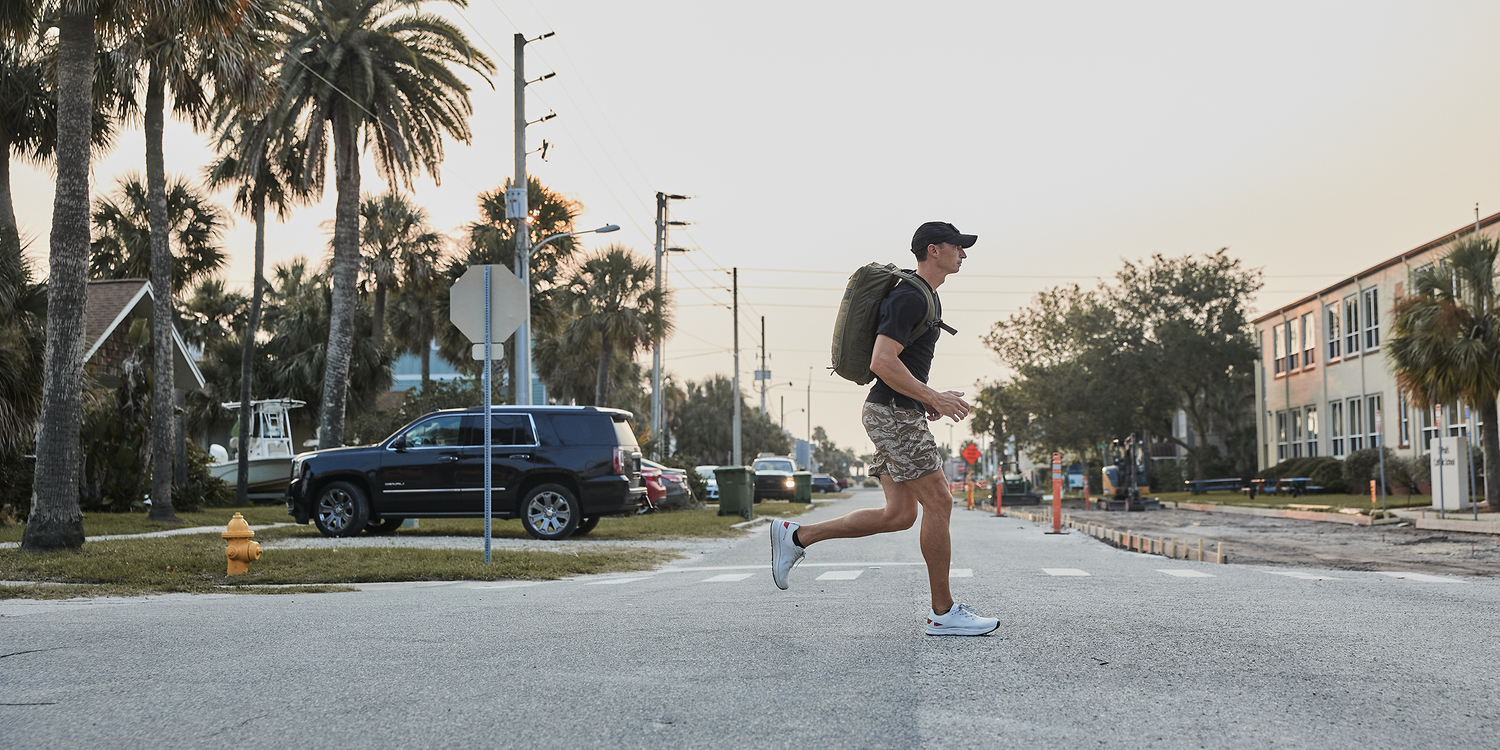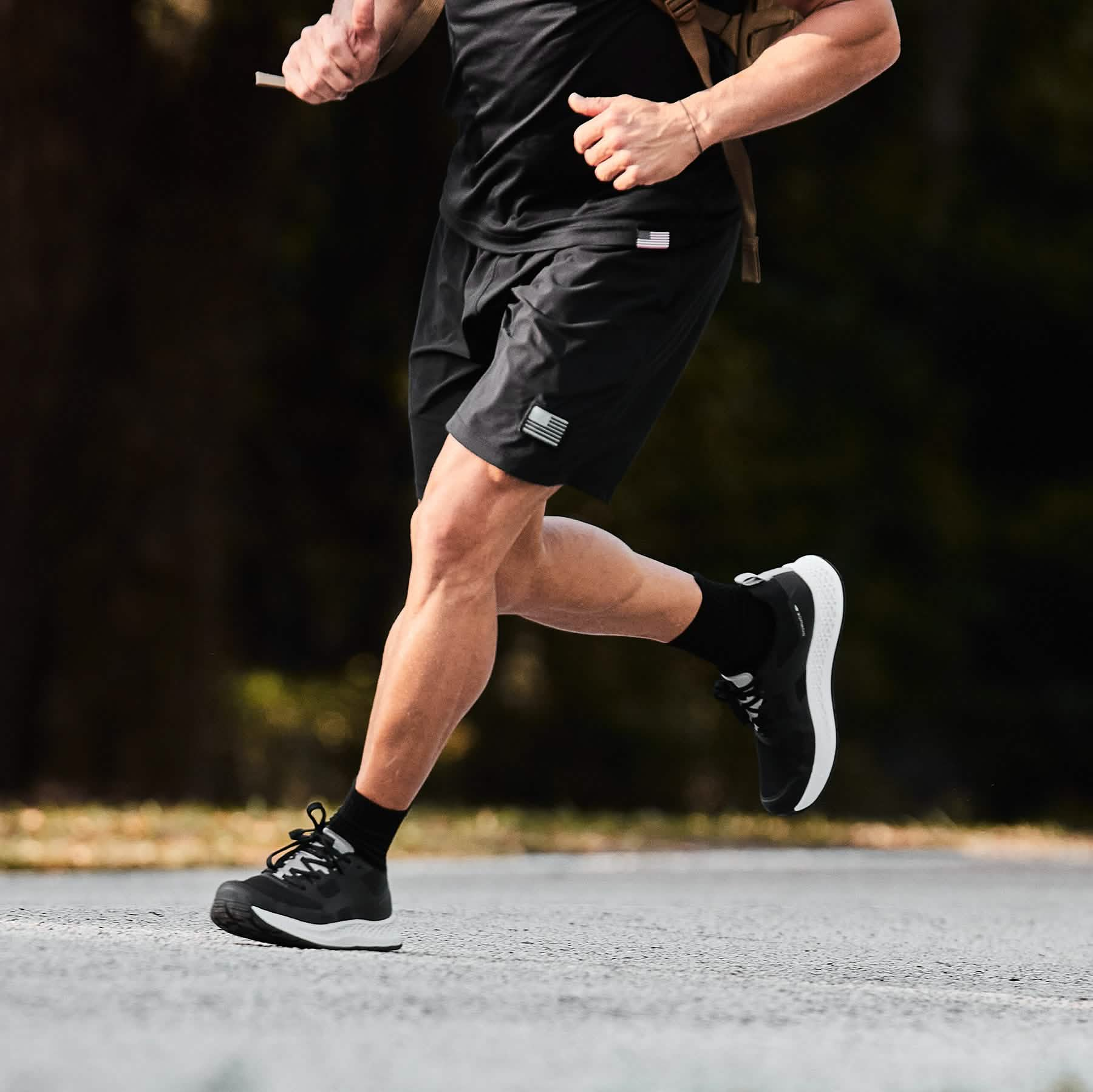Cross training for runners is essential to stay healthy, get stronger, run farther, and keep running for years to come. There are plenty of ways to get stronger and improve your running outside of running: swimming, yoga, combat sports, and cycling come to mind. Our favorite cross training exercise, though, is becoming increasingly popular among runners. It stands out for its ability to build functional strength while improving cardio. It's called rucking, and it should be in every runners' toolbox as a cross training exercise.
What is rucking? We break it down here, but it can be summed up as walking with weight on your back. Rucking has tons of benefits, like getting stronger and improving cardio fitness. It engages your whole body and torches calories.
Plus, rucking and running have enough similarities that most runners love rucking. For example, both rucking and running let us get fresh air and sunshine, explore our home communities, and make friends. Also, running can be done anywhere. All you need is your running shoes and a GPS watch. Rucking, too, can be done anywhere. Just bring your rucksack and some weight.
Cross Training for Runners: Why All Runners Should Ruck
You already know cross training is important for runners. No matter how many miles you squeeze in per week, cross training reduces soreness and strengthens neglected muscles. Light movement on rest days actually keeps you fresh for your more intense training. All these things make you a better runner.
Rucking accomplishes these and more.
Here are all the reasons we love rucking for runners...
What are the best shoes for running and cross training?
We made Rough Runners™ for runners who put lots of miles on their shoes, but want something for cross training, too. Built on a modern running platform, Rough Runners™ are lightweight and good for high mileage. They've got lateral stability and supportive foam, rather than squishy "marshmallow foam."
Tap here to check them out.
1. Get Stronger to Run Longer
Running isn't all about your cardio fitness.
From 5Ks to marathons, runners must be strong to be successful. Your legs carry you forward toward the finish line and bear the brunt of running. Less obvious, though, is that your upper body needs to be strong enough to maintain good posture. Both your lower body and upper body play an important role in a runner's endurance.
How can you get strong legs for running? Try rucking. Though walking with a heavy rucksack avoids the pounding of running, it uses many of the same muscles, all at once. Rucking combines the many benefits of weight training with cardio. We call that Active Resistance Training™.
If you want to be lean with a strong upper body, rucking does the trick. Your shoulders and back contribute heavily to rucking, holding the weight (10, 20, or 30+ lbs) in place while your walk.
Finally, abdominal muscles (aka your "core") stabilize your weighted ruck and get stronger, too. Carrying a heavy load is an excellent core exercise (much better than situps, in fact) missing from many run training programs.
When you get strong, you run long.
Cross training should make runners feel stronger and lighter--more springy. By including rucking in your routine, your running fitness will improve greatly.
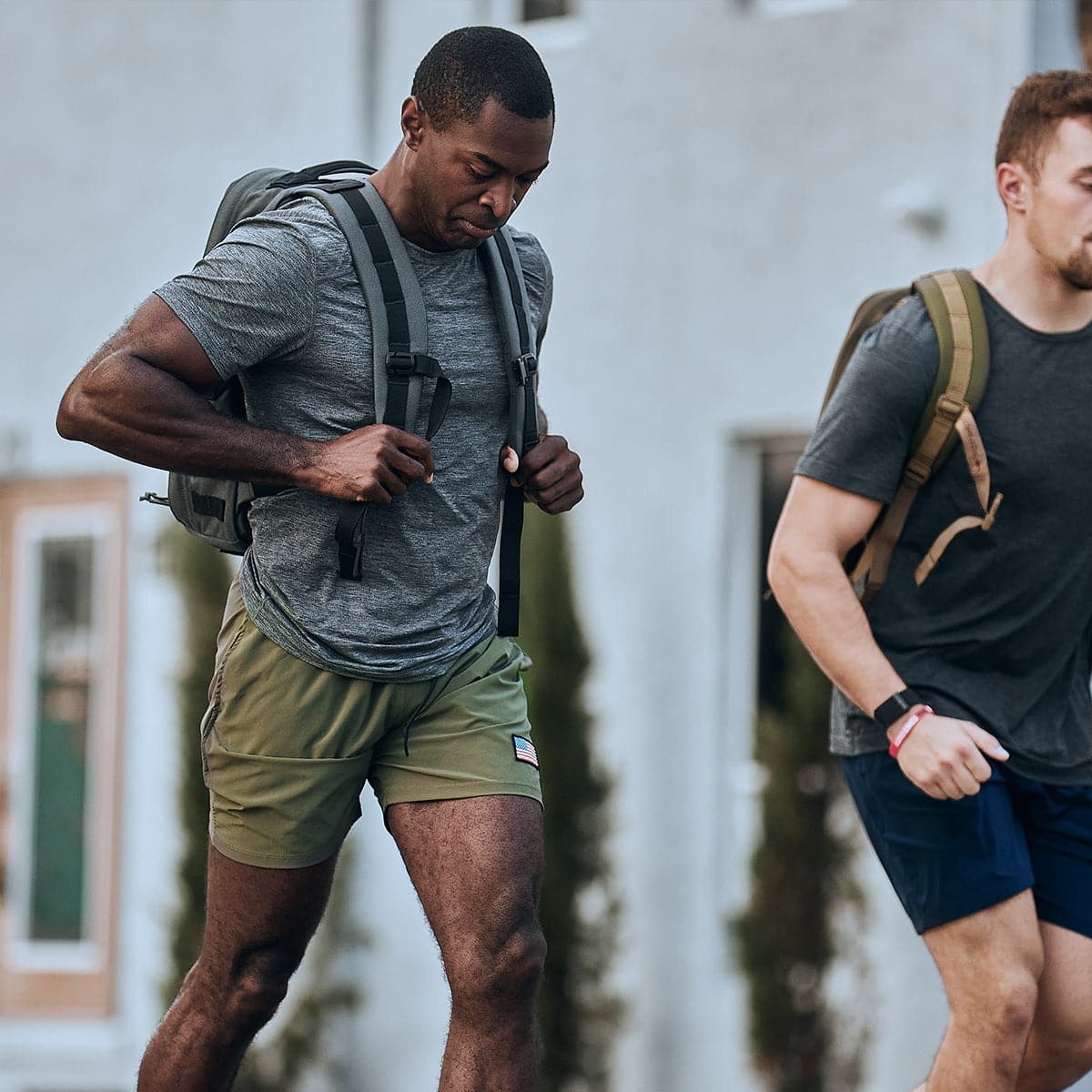
2. Rucking is Active Recovery
Active recovery means you flush out muscle soreness without stressing the body all over again. When your muscles are sore, elevating your heart rate and pumping blood through those sore areas helps aid recovery and prepares you for your next workout. Even light soreness is a sign to move your body and get your heart rate up.
In other words, you should exercise when you're sore, though the effort should be lighter.
The day after a hard run, cross training jumpstarts the recovery process. Because rucking combines strength and cardio, it's the perfect cross training exercise for runners to flush out their lower body soreness. Rucking engages your calves, hamstring, glutes, quads, and hips, loosening these muscle groups while you break a sweat.
You'll always feel better after rucking. If you're extra sore, consider lightening your normal load by 5-10 lbs.
3. Rucking is Zone 2 Training
Did you know most of your runs should be done in zone 2? Heart rate training is how runners sharpen their training and break through plateaus. Zone 2 is the standard training effort that should make up at least 80% of your time running, according to many run experts and coaches. While runners should reserve their hardest efforts for running (like sprints and strides), cross training should be at a lower heart rate, like zone 2.
Cross training is complementary to running, after all. It shouldn't be the focus of your intensity, but the activity that helps carry you toward your running goals.
This is another reason rucking is excellent cross training for runners. We recommend rucking at 15-20 minutes per mile, which lands most people right in zone 2. Like running, you can adjust your rucking pace to find your heart rate zone 2. Also, the weight in your rucksack can be adjusted to change your effort. Do you find yourself creeping into zone 3 while rucking? Slow down or lower the weight you're carrying.
4. Rucking Improves Posture
In both rucking and running, we stand tall and bend forward slightly at the waist. Standing tall helps us breathe better, engage our cores, and move efficiently. The slight bend forward propels us forward. In rucking, when we maintain this posture with a weighted rucksack, our running posture gets stronger.
Additionally, wearing a rucksack pulls your shoulders back. After a few rucks, you'll stand taller and might feel uncomfortable hunching over your phone or computer.
It's good to stand tall, breathe deep, and move with an athletic posture. These habits are important for runners, and rucking instills them in us while we're cross training.
5. Rucking is Lower Impact than Running
One of the most important features of any cross training for runners is lower impact. You don't want to match the pounding and strain on your joints that your run training already provides. Rucking takes low impact walking and adds the strength benefits of carrying weight. At 15-20 minutes per mile (our recommended rucking pace), you'll never have both feet off the ground. This is a good thing: your ankles, knees, and hips won't experience the impact of running.
Rucking is a popular activity for runners with minor injuries, too. Always consult a doctor with any injury, but you might be cleared for rucking, which keeps you on your feet and active while recovering.

6. You Have Everything You Need to Start Rucking
If you're wary of gym memberships, prefer exercising outdoors, or don't want to invest in gear for cycling or yoga, choose rucking. You likely have everything you need to start rucking. While we sell built-to-last training rucksacks, convenient Ruck Plates®, and ultra-supportive running-rucking shoes, you don't need the nicest gear to get started.
Most backpacks can serve as rucksacks. Choose the more sturdy one, if you have options, but your first few rucks don't need to look perfect. The whole point is walking with weight, and whatever you've got in your closet will do.
For weight, wrap some dumbbells in a towel, fill your pack with textbooks, or stack some bricks inside. Start with 10-25 lbs, depending on your fitness level. When in doubt, start lighter and build up over time.
Finally, your running shoes will serve you well for rucking (until your weight gets high enough for something more sturdy, like specialty Rough Runners™ or rucking boots). If your running shoes are meant for paved surfaces, ruck on paved surfaces, too. Trail runners should ruck on flat, even surfaces while getting accustomed to walking with weight. Once you feel comfortable wearing a rucksack, you might hit your favorite dirt trails.
7. Rucking and Running are Complementary
Runners tend to love rucking. It makes sense: both work your heart and lungs, get you more fresh air, take you new places, and build friendships. Both rucking and running also make us more capable humans by improving our strength, patience (setting goals does that), and long-term health. They're both hard and good for us.
When runners take up rucking for cross training, their fitness becomes more well-rounded. It complements their running mileage perfectly by improving strength in heart rate zone 2.
If your favorite part of running is your local running club, we've built a huge network of GORUCK Clubs where our friends and families meet up to put miles in, explore the world, and do work together.
Take Rucking up a Level
If rucking is essential cross training for runners, is there any way to make it more...fun? Yes. No matter if your type of fun is actually fun or harder and more painful, rucking delivers. And while rucking is a complete exercise on its own, we have exercises we include for "fun" (both kinds).
Plus, we make the best running shoes that can handle cross training, bodyweight PT, and rucking. Seriously, our Special Forces roots inspired Rough Runners™, and they deliver just as well during high-mileage training as they do hauling a sandbag across uneven terrain.
Ruck. Run. Lift. Train. That's the spirit of Rough Runners™.
Ruck PT
Ruck PT (aka rucking workouts) combines a ruck march with strength exercises. It's best for those who have a few rucks under their belt and feel confident moving while carrying weight. Include squats, lunges, and planks in your rucks at intervals, or stop at a park bench for some step-ups. However you PT, bring your rucksack along.
Sandbag workouts
Sandbag workouts are perfect for letting off some steam, getting a workout, and challenging yourself in a new way. Our indestructible training sandbags can be safely tossed and carried over distance. Take your strength training outdoors and try some of our sandbag workouts. Bring your rucksack and some friends, too, and take your sandbag for a ruck march together.
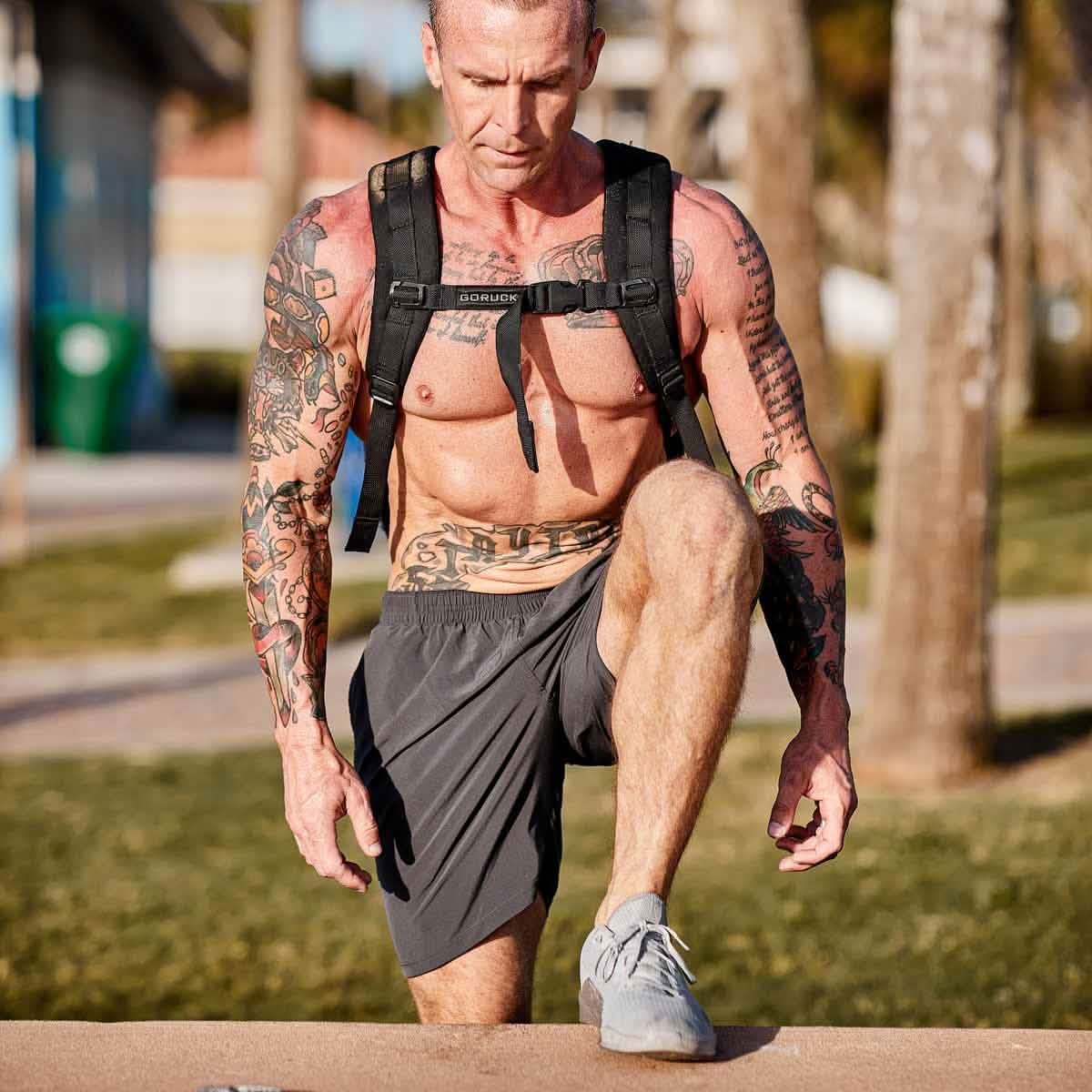
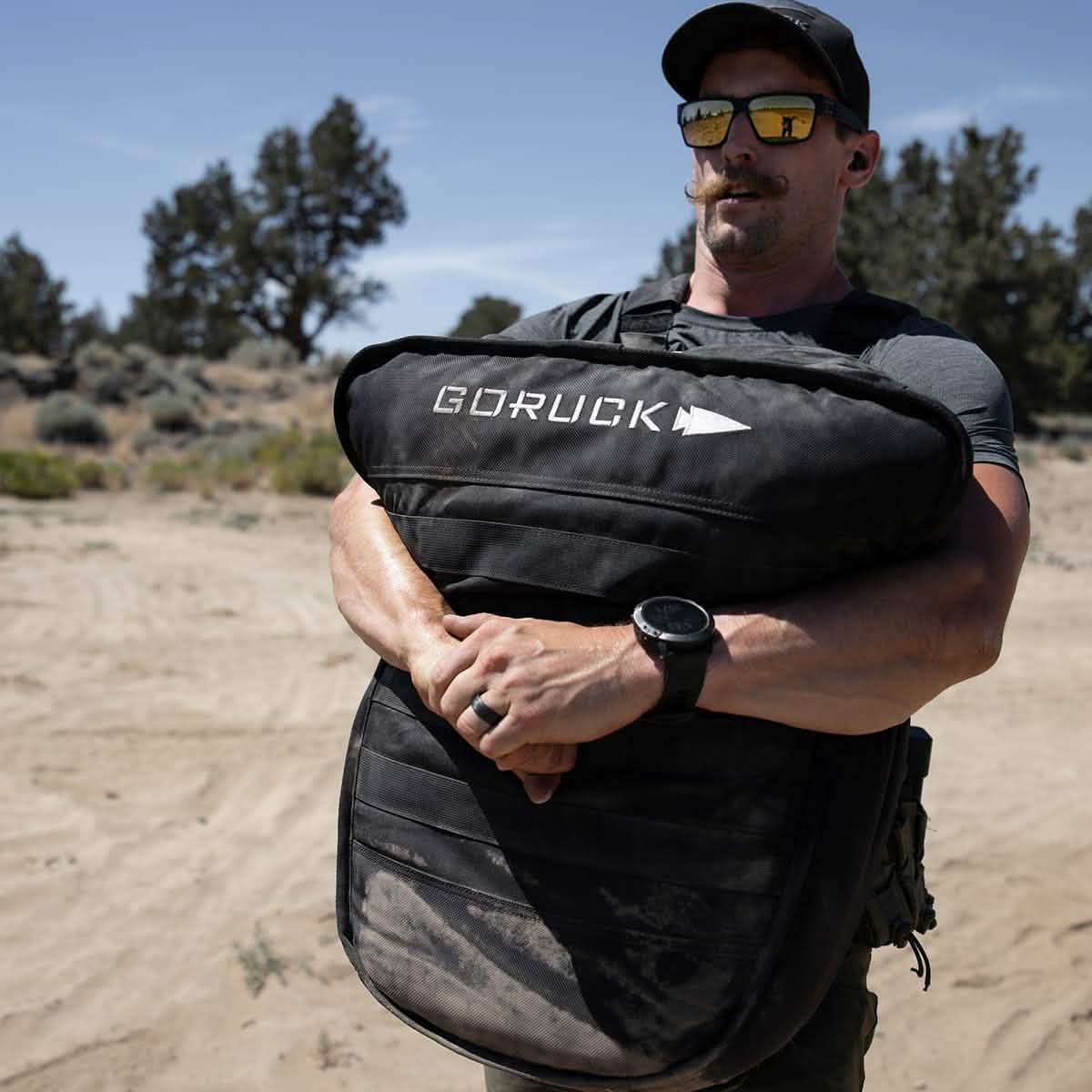
Heavy carries
Pick up a Sand Tombstone or Sand Medicine Ball and walk. Maybe it's just up and down your driveway, maybe it's a few miles with friends. Carrying heavy things is good for your back and core, and it strengthens your legs in ways that nothing else can. The small muscles in your feet and calves will be as engaged as your glutes, hamstrings, and quads.
Ruck Shuffling
Also known as the “Airborne Shuffle”, ruck shuffling involves moving your feet faster and leaning forward slightly more. You're wearing a rucksack, so it's not running, but it's not quite walking either. There's less heel-striking involved when you ruck shuffle. Instead, you'll land toward the middle of your foot. The idea is to maintain the same pace throughout the workout. It takes a disciplined effort to shuffle at the same pace for 30+ minutes, but runners may find the cadence familiar. For some, ruck shuffling will let them stay in zone 2 for recovery. Others may find ruck shuffling elevates them beyond recovery mode and can use this workout as a substitute for easy running. We recommend ruck shuffling at 13-16 minutes per mile with a lighter rucksack weight than you're accustomed to.
Ruck shuffling and (for more advanced ruckers) ruck running require supportive shoes that are lightweight and agile. No surprise we recommend our Special Forces inspired Rough Runners™.
Gear You Need for Cross Training
While we're talking about elevating your cross training with rucking and the above exercises, let's list some essential cross training gear to add to your home gym. This list is all about making you a stronger runner, GORUCK style.
- A training rucksack: something streamlined, durable, and capable of carrying 20+ lbs. The Rucker® is purpose built to make you stronger, one step at a time.
- Rough Runners™: running shoes built for high mileage running, rucking, and tossing sandbags around. See all available colors right here.
- A training sandbag: carry it, toss it, push it or pull it. It's the ultimate home gym in one piece of equipment. Beginners might start with 20-40lbs, but we make them heavier, too. Check out our sandbags here. Or substitute a Sand Kettlebell.
- Something heavy: maybe something heavier than your training sandbag. We love carrying heavy things for core strength, leg strength, grip strength, and cardio. We promise hauling a Tombstone or Sand Medicine Ball will be a strength and cardio workout.
Cross Training For Runners: FAQs
How should I cross train as a runner?
Cross training for runners should include lower impact activities that complement their running goals. Rucking, yoga, and cycling are popular cross training workouts that improve strength and fitness while giving the body rest from running. Cross train 2-3 times per week on rest days to optimize your running recovery.
Can rucking make you a better runner?
Yes, rucking will make you a better runner. Rucking combines cardio and strength training, so it works your heart and lungs while making your legs stronger. Muscles neglected by running are used while rucking, too, giving runners a more balanced approach to fitness.
Does rucking build bone density?
Research shows that rucking improves bone density, helps with balance and posture, and eases back pain. Carrying heavy things builds a strong body without lots of impact or risk of traumatic injury. For longevity and quality of life, rucking is an excellent exercise.
How many times per week should runners cross train?
Runners should cross train 2-3 times per week, depending on current running volume and goals. Ideally, cross training will complement a running program by improving strength and preventing injuries on rest days. Cross training should always make your body feel better, not worn out.
Should runners lift weights for legs?
Strength training is an excellent way to improve leg strength and become a better runner. Squats, lunges, and deadlifts can be performed with weights or outdoors with sandbags. Rucking, too, improves leg strength and is a great way for runners to train their legs for endurance.
How can a beginner runner build endurance?
Beginner runners build endurance with consistency and staying healthy. Low to medium effort runs consistently have a much greater impact than sporadic intense running. Start slow and lay the foundation for endurance by not running too much, too soon, and by cross training.
How can I run longer without getting tired?
Zone 2 rucking is a popular way to build endurance and improve your running fitness. Training in heart rate zone 2 (which feels slow for many runners) is an essential part of building endurance and becoming a better runner.

